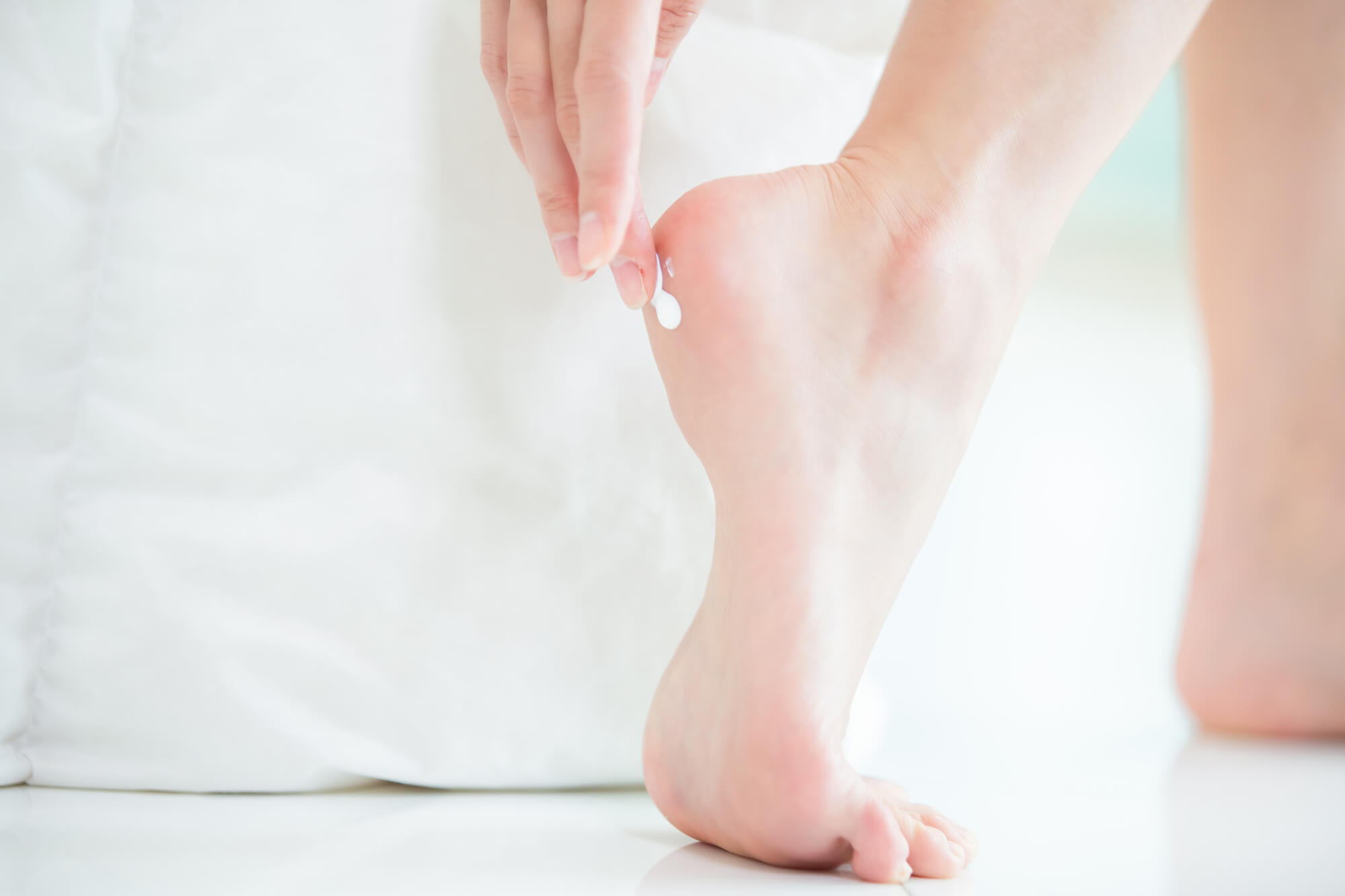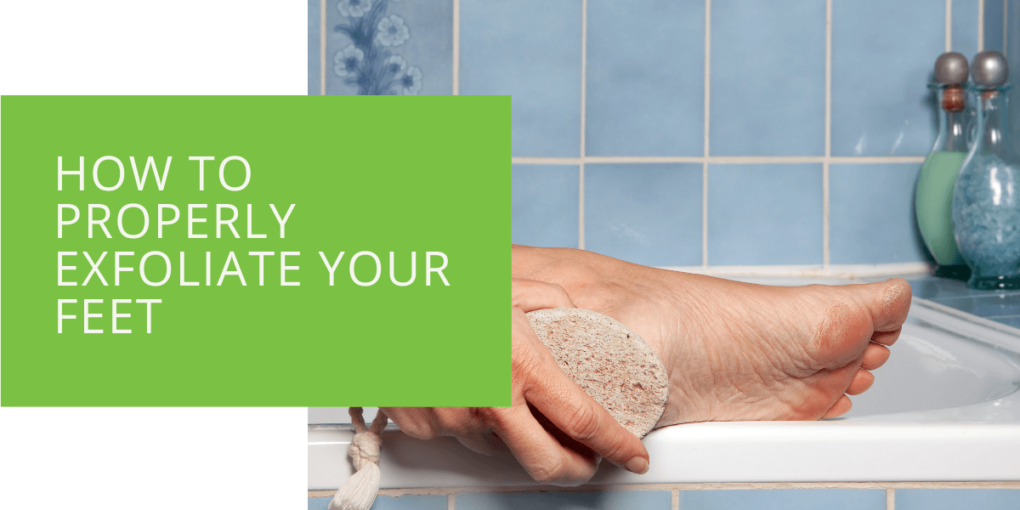How to Properly Exfoliate Your Feet for Healthy Skin
Taking care of your feet is often overlooked, yet it is crucial for maintaining personal hygiene and overall well-being. Neglecting proper foot care can lead to many issues, from dry skin to fungus infections, and can negatively impact your quality of life. That's why we created this comprehensive guide to help you master the art of foot exfoliation to show off soft, healthy feet that look and feel great.
In this guide, we will delve into the details of foot exfoliation and explore the various methods you can use to achieve optimal results. From the importance of soaking your feet to using foot scrubs and pumice stones, we will cover everything you need to know to keep your feet in top condition. Whether you're looking to pamper yourself or improve foot health, this guide will provide the tools and knowledge you need to achieve soft, healthy feet that you can be proud of.
Key Takeaways
- Proper foot exfoliation is essential for removing dead skin cells, preventing dryness, and addressing common foot concerns like cracked heels.
- Soaking and drying your feet correctly are fundamental steps before exfoliation, as they prepare the skin and prevent potential issues.
- Regular foot care and incorporating exfoliation into your routine are key to maintaining healthy, beautiful feet and preventing future skin problems.
Understanding the Basics
What is Foot Exfoliation?
Foot exfoliation involves removing dead skin cells from the surface of your feet. These dead skin cells can accumulate over time, leading to dryness, roughness, and discomfort. Dead skin cells on the feet can be caused by friction, pressure, or lack of moisture. Understanding why they accumulate is the first step in effective foot care.
Why Dead Skin Accumulates on Feet
The accumulation of dead skin on your feet is a natural occurrence. Your feet are constantly subjected to pressure, friction, and the wear and tear of daily activities. Over time, this can lead to the formation of calluses and the buildup of dead skin cells. Dead skin accumulation can also be exacerbated by ill-fitting shoes, excessive standing, or walking barefoot on hard surfaces.
The Consequences of Neglecting Foot Care
Failing to address the issue of dead skin on your feet can result in a range of problems, including dry and rough skin, cracked heels, fungal infections, and even unpleasant odors. Neglecting your feet can impact your overall comfort and confidence. Addressing these issues promptly enhances your feet' appearance and contributes to overall foot health.
Preparing for Exfoliation
Soaking Your Feet
One of the essential steps in the foot exfoliation process is soaking your feet. This preliminary step softens the skin, making it more receptive to subsequent exfoliation techniques.
The Importance of Soaking
Soaking your feet in warm water is not just a relaxing experience; it also serves a functional purpose. It helps to soften the skin, making it easier to remove dead skin cells and achieve a smoother texture. Soaking your feet can relieve fatigue and reduce muscle tension, providing additional benefits beyond skin care.
Tips for an Effective Foot Soak
You'll want to follow a few simple guidelines for an effective foot soak. These include using a suitable basin or foot spa, adding ingredients like Epsom salts or essential oils for added relaxation and skin benefits, and ensuring you soak your feet adequately. DIY foot soak recipes, such as Epsom Salt and Peppermint Soak or Vinegar and Listerine Soak, can enhance the benefits.

Drying Your Feet
After soaking, it's crucial to dry your feet properly. Leaving moisture between your toes can create an environment conducive to fungal infections.
The Role of Proper Drying
Properly drying your feet is crucial in preventing fungal infections and maintaining overall foot health. Moisture trapped between the toes can lead to issues such as athlete's foot. Thoroughly drying your feet ensures your skin remains healthy and free from fungal growth.
Preventing Fungal Infections
To prevent fungal infections, paying attention to the spaces between your toes when drying is essential. Gently patting your feet dry, particularly in this area, is key to ensuring a healthy and odor-free outcome. Investing extra moments in this step can save you from discomfort and complications.
Exfoliation Techniques
Using a Foot Scrub
Foot scrubs are specifically designed to exfoliate and moisturize your feet simultaneously.
Benefits of Using a Foot Scrub
Using a foot scrub offers several advantages. It effectively removes dead skin cells, improves circulation in your feet, and leaves them feeling soft and rejuvenated. The exfoliating action of the scrub promotes cell turnover, revealing fresh, healthier skin underneath.
Choosing the Right Foot Scrub
Selecting the appropriate foot scrub is crucial to achieving the desired results. Look for scrubs that contain natural exfoliants like sugar or salt and hydrating ingredients such as shea butter or coconut oil. Understanding the ingredients in your foot scrub can help you tailor your choice to your specific skin type and needs.
How to Apply and Massage the Scrub
Applying and massaging the foot scrub correctly is essential for an effective exfoliation process.
- Apply the scrub to damp feet.
- Gently massage it in a circular motion, paying extra attention to rough areas.
- Rinse thoroughly and pat dry. The massaging action not only removes dead skin cells but also stimulates blood flow to the area, promoting overall foot health.
Utilizing a Foot File
A foot file or pumice stone is valuable for tackling stubborn dead skin.
Understanding Foot Files
Foot files come in various types, including manual and electric options. They gently buff away dead skin, leaving your feet smoother and more comfortable. Different types of foot files cater to different preferences and needs, so understanding the options available can help you make an informed choice.
Safely Removing Dead Skin
To safely remove dead skin using a foot file:
- Soak your feet to soften the skin.
- Gently rub the file on rough areas, applying light pressure.
- Avoid overuse to prevent injury or irritation. Proper technique is essential to avoid causing damage or discomfort when using a foot file.
Maintaining Your Foot File
Regularly maintaining your foot file is crucial to prevent the accumulation of dead skin cells and bacteria. Cleaning and rinsing it after each use is a simple yet effective practice. Neglecting to clean your foot file can lead to hygiene issues and reduce its effectiveness in exfoliating your feet.

Softening the Skin
Moisturizing After Exfoliation
After exfoliation, it's crucial to moisturize your feet to lock in hydration and maintain their newfound softness.
Recommended Foot Creams and Lotions
Selecting the right foot cream or lotion is vital for ongoing foot care. Look for products containing ingredients like urea, glycerin, and hyaluronic acid to keep your feet soft and smooth. These ingredients help lock in moisture and prevent your skin from becoming dry and rough again.
Preventing Dry Skin on Your Feet
Consistent moisturizing is the key to preventing dry skin from returning. Make it a daily habit to apply a suitable foot cream, especially before bedtime. Daily moisturizing helps maintain the softness and health of your feet, preventing the recurrence of dry skin issues.
Addressing Specific Concerns
Cracked Heels
Cracked heels can be painful and unsightly, but they can be effectively managed with proper care.
Causes and Solutions
Common causes of cracked heels include dry skin, standing for extended periods, and wearing ill-fitting shoes. To address cracked heels, follow these steps: Understanding the root causes helps you take proactive steps to prevent their occurrence.
Steps for Healing Cracked Feet
- Soak your feet to soften the skin.
- Exfoliate gently to remove dead skin.
- Apply a healing foot mask or cream.
- Wear socks to lock in moisture.
These steps provide a comprehensive approach to healing cracked heels, promoting recovery, and preventing further damage.
Professional Treatment Options
If your cracked heels persist or worsen, consult a podiatrist for professional treatment. Professional intervention may sometimes be necessary to address severe or recurring issues with cracked heels.
Maintaining Healthy Feet
Regularity is Key
To maintain healthy feet, incorporate foot exfoliation into your regular self-care routine. Consistency is crucial in foot care. Regular exfoliation helps prevent the buildup of dead skin cells and ensures your feet remain soft and comfortable.
Preventing Future Dry Skin
Besides exfoliation, there are additional measures you can take to prevent future dry skin issues on your feet. These preventive measures include wearing properly fitting shoes, keeping your feet clean and dry, and avoiding walking barefoot in public areas.
Incorporating Foot Exfoliation into Your Routine
Integrating foot exfoliation into your regular self-care routine allows you to enjoy soft, healthy, and beautiful feet year-round. Making foot exfoliation a habit ensures that you continue to experience the benefits of improved foot health and appearance.
Conclusion
We have delved into the essential steps for effectively exfoliating your feet and maintaining healthy, beautiful skin. Proper foot care removes dead skin cells, prevents dryness, and addresses common concerns such as cracked heels. At ePodiatrists, we specialize in foot care and offer expert guidance and treatment. Book your appointment today to experience the advantages of professional foot care and enjoy the confidence that comes with beautiful, healthy feet.
FAQ
Is it better to exfoliate feet wet or dry?
Exfoliating your feet when they are slightly wet, such as after soaking, is generally recommended. Wet skin is softer and more pliable, making it easier to remove dead skin cells effectively.
Are exfoliating feet healthy?
Yes, exfoliating your feet is a healthy practice when done correctly. It helps remove dead skin cells, promotes skin renewal, and prevents issues like dryness and calluses. However, it's essential to use gentle techniques and not overdo it to avoid skin irritation.
Should you scrape dead skin off your feet?
Scraping dead skin off your feet can be a part of a healthy foot care routine, especially if you have calluses or rough patches. However, it should be done carefully and with the right tools, like a pumice stone or foot file. Avoid excessive scraping, as it can damage healthy skin.

